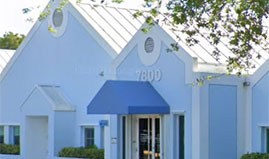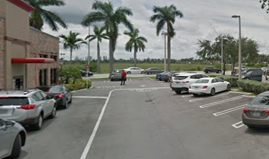Shoulder Instability (Dislocation)
Description Of Shoulder Instability
A dissociation of the humeral head and socket (glenoid). The shoulder may partially subluxate or completely dislocate. Complete dislocations may require emergent reduction of the shoulder. Dislocations may lead to a tear of the shoulder capsular ligaments and a separation of the glenoid labrum. They may also result in cartilage injuries to the humeral head and/or glenoid. The most common dislocation is anterior (or forward), however posterior, inferior, and multi-directional instability are possible. A previous dislocation may increase the risk of future dislocations. Fracture of the humeral head (Hill Sachs Lesion) and/or glenoid (Bony Bankart Lesion) may also occur and may increase the re-dislocation rate.
Symptoms Of Shoulder Instability
Subluxations and dislocations are very painful. A shoulder that remains dislocated will result in complete loss of shoulder motion with pain. A dislocation usually occurs after a significant trauma to the shoulder, however, some events occur by simply placing the shoulder in a vulnerable position. Patients who experience recurrent events are said to have shoulder “instability.” Patients with generalized shoulder laxity with recurrent feelings of instability may have “multi-directional instability.” Patients with shoulder instability may be very apprehensive to perform certain activities.
Diagnosis Of Shoulder Instability
Your doctor will perform a comprehensive physical examination. Additional tests may be performed to rule out other possible injuries, including x-rays, ultrasound, CT scan, and magnetic resonance imaging (MRI).
Treatment Of Shoulder Instability
Your doctor may recommend a brief period of sling immobilization. Some bracing techniques have shown promise in lowering the need for surgical intervention. A specialized course of rehabilitation may be recommended. The re-dislocation rate depends largely on: 1) the patient’s age at the first dislocation, 2) quantity and type of previous dislocations, 3) bone fractures, and 4) inherent shoulder laxity. Patients over the age of 40 have an increased risk of concurrent rotator cuff tendon tears. Surgery may be recommended based on the above risk factors. Your orthopedic surgeon can guide you as to which form of treatment is best for you.
Surgical Treatment Of Shoulder Instability
There are two surgical options, “open” and arthroscopic. “Open” treatment may be the best option in revision cases or in dislocations with significant bone fractures. Arthroscopic treatment is an otherwise excellent surgical technique with comparable outcomes. During surgery, the doctor will examine the shoulder for instability and repair the capsular-ligament and labrum tears. Anchors are placed into the bone and used to repair the labrum and tighten the capsule. Fractures may require additional fixation and reconstruction. After surgery, the shoulder is placed in a sling. Rehabilitation is essential after surgery to restore normal shoulder motion and strength.
Shoulder Instability Brochure
Literature regarding Shoulder Instability and Dislocations by the American Academy of Orthopedic Surgeons
- Anterior dislocations: Usually a sudden pull on the arm or excessive rotation of the shoulder. 90% of dislocations are anterior.
- Posterior dislocations: A sudden posteriorly directed force at the shoulder. 10% of dislocations are posterior.
- The labrum and capsule may become detached from the glenoid rim or humeral head.
- Bankart Lesion: is a detachment of the inferior glenohumeral ligament and labrum from the glenoid bone. Found in over 80% of shoulder dislocations.
- HAGL Lesion: is a Humeral Avulsion of the Glenohumeral Ligament lesion. As opposed to a Bankart lesion, the ligament is detached from the anterior humerus instead of the
- RHAGL Lesion: (or Reverse HAGL) is similar to a HAGL lesion except on the posterior aspect of the humerus.
- SLAP lesion and labrum tears.
- Bicep tendon tear.
- Axillary nerve and other nerve injuries.
- Rotator cuff tears (more common after age 40).
- Fractures of the glenoid (bony Bankart lesion), humeral head (Hill Sachs Lesion), coracoid, and acromion can happen with shoulder dislocations.
- MRI and/or CT scans might be needed to assess fractures.
- A Hill Sachs lesion is a posterior humeral head fracture.
- Caused by the posterior humerus engaging the glenoid in anterior dislocations.
- Large Hills Sachs lesions may need to be repaired to prevent further instability.
- The fracture can also occur on the anterior humeral head in posterior dislocations called a reverse Hill Sachs.
- When the shoulder is partially dislocated, it is called a subluxation.
- When the humeral head completely dissociates from the glenoid, it is called a dislocation.
- Dislocations might require emergent reduction in the Emergency Room if they do not spontaneously reduce.
- Brief period of shoulder sling immobilization.
- Shoulder therapy to strengthen the shoulder stabilizers.
- Age
- Recurrence Rate
- 1-10
- 100%
- 11-20
- 27-100%
- 21-30
- 40-80%
- 31-40
- 40-80%
- 41-50
- 0-25%
- Open and arthroscopic surgery can be performed to repair the capsule and labrum.
- Anchors are placed in the glenoid or humerus bone and used to repair the ligament, capsule, and labrum.
- A less invasive procedure to repair the tendon tear.
- A camera is inserted into the shoulder and viewed via a video monitor.
- The surgeon can repair the tendon.
- Arthroscopy has a very high success rate (90+%), however, certain instability cases may require an open repair.
A less invasive procedure with the benefits:
- Less surgical dissection.
- Less surgical pain.
- Faster recovery rates.
- Better visualization of the shoulder anatomy.
- Arthroscopies are performed under general anesthesia.
A nerve block may be performed for pain relief after surgery.
- You may take your regularly scheduled medications.
- Certain medications must be stopped before surgery (such as blood thinners). A complete list will be given to you by our office staff.
- Do not eat or drink after midnight before your surgery.
- You will be contacted by the hospital or surgical center the day before surgery.
- You will be notified: when to arrive for your surgery, when you can eat, and will be helpful in answering questions you may have concerning medication, transportation, and other concerns.
- The majority of arthroscopic cases are outpatient procedures and patients are allowed to go home the same day of their procedure.
- In certain cases, patients may stay overnight for observation at the hospital and will be allowed to go home in the morning after surgery.
- After your surgery, expect to remain in the recovery room until you have been cleared to go home. This may require a few hours.
- Patients who have a nerve block, will have prolonged anesthesia to the shoulder and arm and may go home with the arm still “numb”.
- Therefore, be careful to avoid any pressure or injury to the shoulder and arm as you will not feel the pain until the block has worn off.
- You should arrange transportation with family, friends or other means for after surgery.
- You will NOT be able to drive for 4-6 weeks after surgery until you have been cleared.
- As with any surgery, there will be surgical pain. The benefit of arthroscopic surgery is the limited amount of surgical dissection and faster recovery time.
- You will be prescribed narcotic medication to go home with.
- Do NOT make important decisions while taking narcotic medications.
- You will be prescribed a narcotic for pain relief after surgery.
- You should continue the medication for the first 48 to 72 hours as directed and then wean the medications when you are able.
- Do not attempt to lift the arm “actively” by yourself.
- Do NOT remove the sling. The repair will take about 6 weeks to heal onto the bone and longer for complete Early activity may cause failure of your repair.
- Do NOT make important decisions immediately after surgery or while on narcotic medications.
- Do not bathe or go into a pool until your doctor has cleared you for such activity.
- You may shower after 72 hours if the incisions are dry.
- Remove dressings from shoulder prior to showering (see section below).
- Remove sling and keep arm at side.
- You may remove the shoulder dressings after 72 hours.
- Please do NOT remove the white sticky “steri-strips” or “butterfly” stitches.
- Towel-dry the incision and place a band-aid over the steri-strips after showering.
- Weaning narcotics is best done by alternating Tylenol or anti-inflammatory medications such as Aleve or Motrin in place of a regularly scheduled narcotic pill at every-other scheduled narcotic dose.
- Narcotics are eventually discontinued altogether.
- Narcotics can make you constipated, nauseous, and can affect your ability to make decisions.
- The shoulder MUST be maintained in a sling time except for showers, baths and therapy and must be worn day and night.
- Non-compliance with immobilization can cause failure of the repair.
- Bring a loose fitting shirt. A button-down or over-sized T-shirt works best.
- The arm in the sling is tucked under the shirt, the other arm is placed through the sleeve.
- Therapy begins according to a strict therapy schedule usually 2-5 days after surgery.
- Physical therapy progresses over a 16-week period from full immobilization to full return of motion.
- Expect return to full overhead activities and contact sports at approximately 6 months.
- Each patient has an individually designed rehab program.
- Therapy is performed with a licensed therapist usually at approved outpatient therapy centers.
- Hommen will tailor a therapy protocol according to your shoulder needs for therapist to follow.













